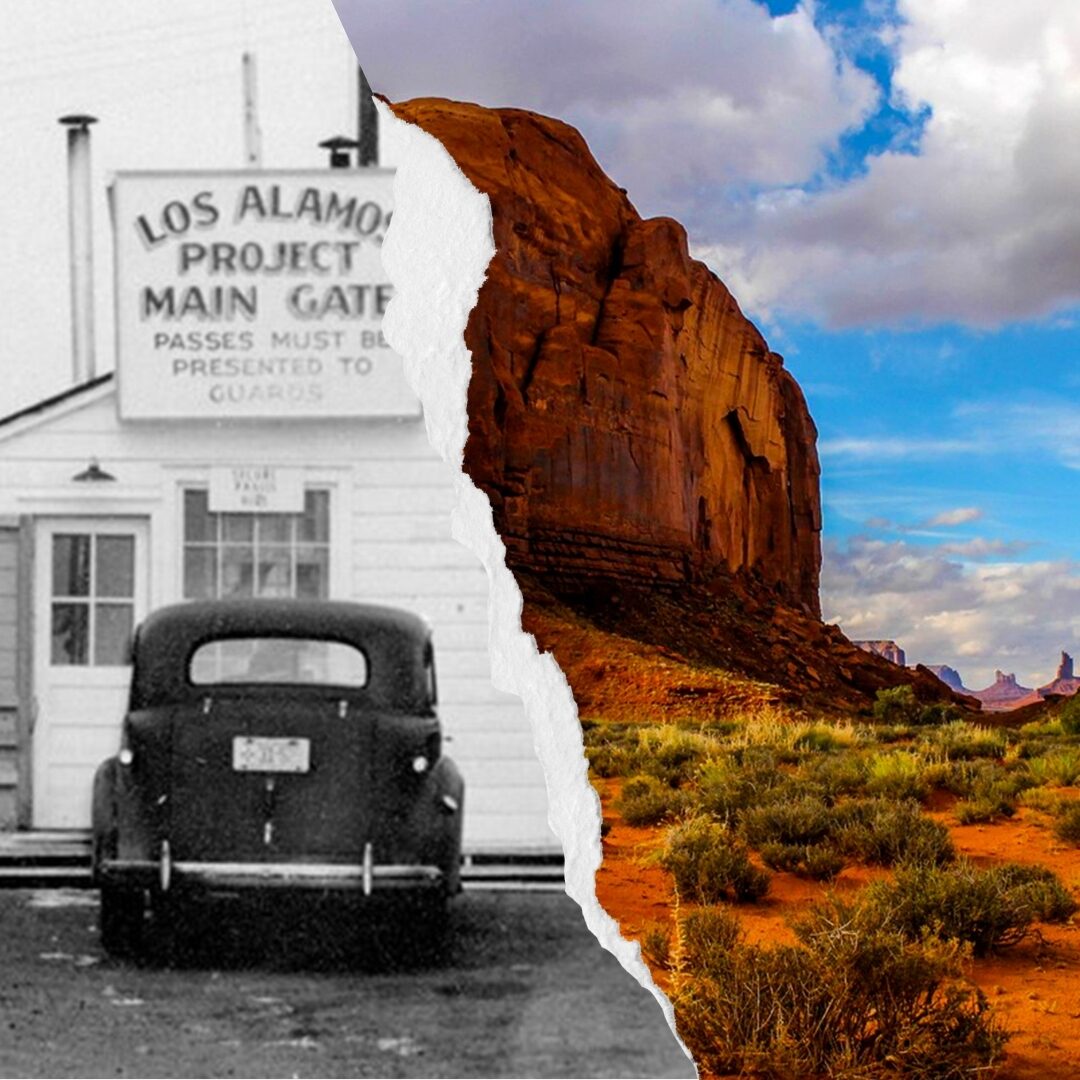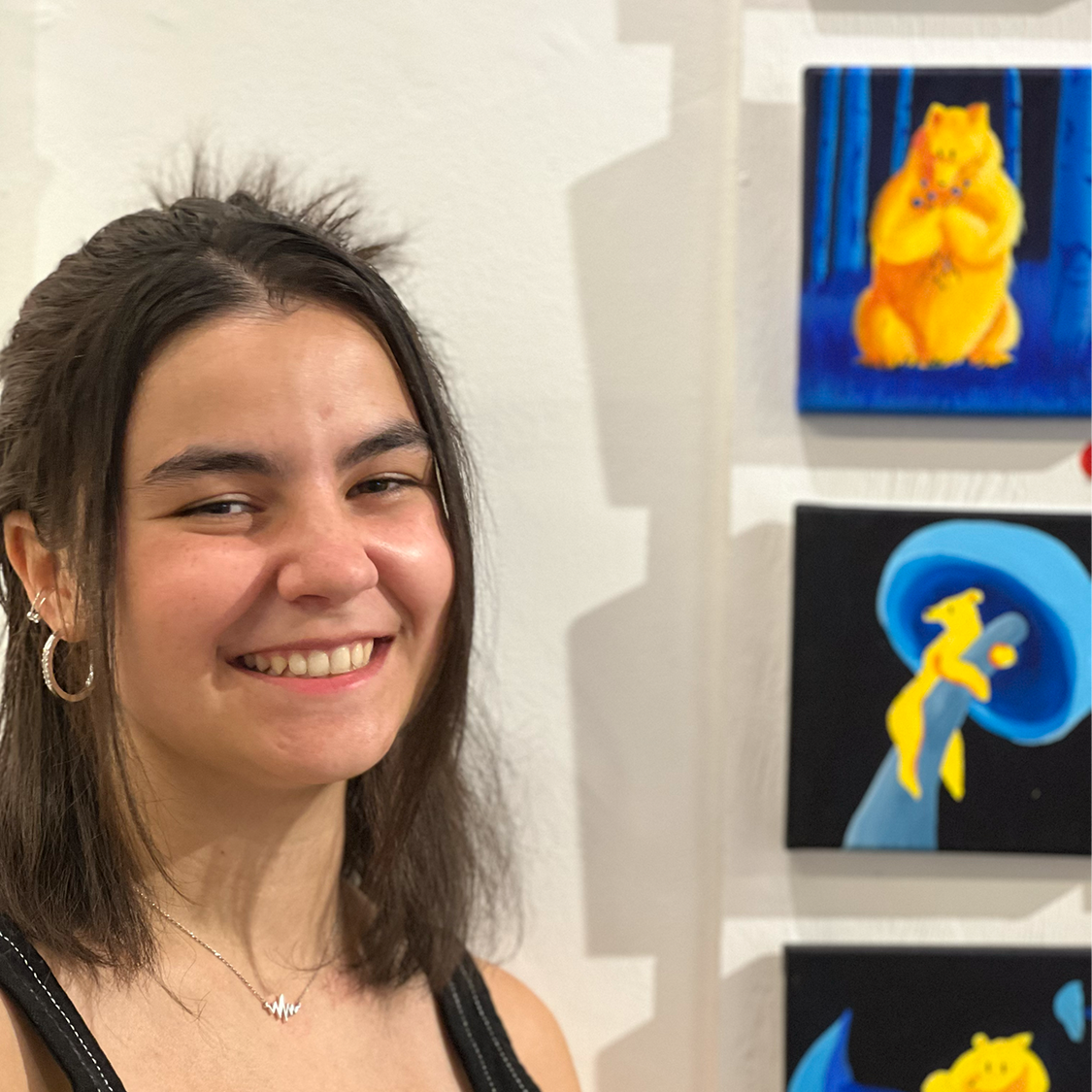Nuclear Legacy
New Mexico is a land of enchantment; she casts spells and curses, gives beauties and pains, forever gifting you for walking her deserts with all things wonderful and all things horrifying. She holds adventures, mysteries, and secrets. She was my home. But before she ever housed me, she housed Fat Man and Little Boy. And ever since then, New Mexico sends curses to my family and to me that can never be undone.

November 26, 2024
The White Sands are always warm beneath my feet and the dunes are endless. They run towards the setting sun as if they are racing to snatch it up and hold its light forever. The sun prevails in its journey though, and suddenly the sky becomes dark and the white dunes turn blue beneath the moonlight. Crickets chirp and the world seems to pause in time as I lay in the warmth of the sand and train my eyes on the deep, black sky. Somehow, amidst the darkness, there is so much light. The sky is completely littered with stars. Milk appears to flow through them, traveling amongst their clusters, color bleeding through its streams. It is infinite and eternal; it makes no sense, and yet, it is so undeniably beautiful. They are the world’s largest gypsum sand dunes, and they were my favorite place to go in New Mexico, before I moved to northern California when I became a teenager.
New Mexico is a land of enchantment; she casts spells and curses, gives beauties and pains, forever gifting you for walking her deserts with all things wonderful and all things horrifying. She holds adventures, mysteries, and secrets. She was my home. But before she ever housed me, she housed Fat Man and Little Boy. And ever since then, New Mexico sends curses to my family and to me that can never be undone.
Fat Man and Little Boy, the two nuclear bombs the US dropped on Japan in 1945, always fascinated me as a child. Sharing the same home with them made their history all the more remarkable. Growing up, I loved learning about how the first nuclear weapons in the world were developed. Learning about nuclear fission chain reactions and splitting atoms made me feel, in a word, powerful. Knowing how the smallest aspect of matter could completely change the world gave me a sense of agency. If an atom can split and level a city, what could I do as a human being made up of more atoms than a single person could fathom?
Naturally, the other fascinating aspect of nuclear history was how quickly nuclear power could turn life to ash, and how seemingly easy it was to make the decision to create a device that could accomplish this. I was always struck by the idea that human beings were willing to create something that, to their knowledge, had the potential to eliminate all life from the earth. It was a popular theory even that the first nuclear bomb test would light our atmosphere on fire, effectively ending all life and our planet as we know it for what seemed to be, well, forever. The only sense I could make of all of this is that during times of war, humans become remarkably emotional. Every emotion is heightened to its maximum and people begin to act on instinct as anxiety perpetuates and takes control of the prevailing “right mind.” Anxiety hops between individuals and causes groupthink until, next thing you know, we are justifying taking the risk of ending all of humanity because some of humanity is dying.
This is, admittedly, a very black-and-white way to think, and it is clear how much was truly at stake during World War II. After all, the bomb was not intended to end humanity, but simply demonstrate a nation’s power to do so. I understand why it was created, the purposes it did serve, and the positive scientific gains we received from the creation of nuclear weapons. These are all reasons why they still exist today, even though nuclear weaponry, at large, has very obvious, devastating, world-ending consequences. My relationship with nuclear weaponry will last my entire lifetime, as it will for my future family’s lifetimes, and their future family’s lifetimes, and likely many more generations will have a lasting connection to it, regardless of whether the world decides to rid itself of nuclear weapons or not. That is the true power of nuclear weaponry-legacy.
I am a 24 year old woman living on my own in the Bay Area in California, attending university, working towards my Bachelors of Fine Arts in animation and illustration. I have thyroid cancer. I received the diagnosis almost two years ago. It came to me with little surprise. Growing up, my brothers and I, in our twisted, sarcastic humor, always joked that we would all get cancer one day—it was just a matter of time. Whenever we took inventory of our extended family, we could trace a nuclear legacy through our family tree, starting in 1945 and never quite ending or slowing. Joining that legacy seemed like a natural part of life, and I have become the fifth generation of my family to have cancer since the atomic bomb was tested that one summer morning at the height of World War II. My parents were not even born yet, and I was committed to a lifetime of medical appointments, surgeries, and checks. At least, that is how it currently feels. Somehow, that has not even been the worst part of it yet.
I watched my grandfather suffer from cancer four times, in four different ways. He endured disease after disease as it stripped him of his health, his hair, his body, his tongue, his ability to eat and speak. He was a bit of a vaquero and embodied machismo, masculinity, and raw strength. He was incredibly charismatic and had a kind of power to him that not many people in this world can host. And I watched an invisible force slowly strip away every bit of himself, until one day, there was no more. Unsurprisingly, the death of a strong patriarchal figure in my family’s life caused a chain reaction of other trauma to be unleashed in the world, and my family is still left untangling the pieces ten years later, only for it to start again with me.
Ever heard of the Butterfly Effect? Well, I give you Butterfly Nukes, the nuclear weapons-specific butterfly effect. A scientist decided that he liked New Mexico, so he built a weapon of mass destruction; no New Mexicans were warned or evacuated for the test, so my grandfather lost his parents and their parents at a devastatingly young age; he received cancer a few times; his daughter received cancer; he was diagnosed a fourth time; he died; I was left with a hole in my heart. Ten years later, I discovered the legacy in me, too. So today, I write this article because, 79 years ago, a scientist decided he liked New Mexico. The conversation about nuclear weapons should always include the reality of nuclear legacy. My family is just one of hundreds who were unknowingly sacrificed. And 79 years later, they are just barely starting to be recognized.
Something that happened multiple lifetimes ago has changed my life in ways that are difficult to describe. It is hard to say that I am mad because there will never be any direct evidence suggesting that I suffer from thyroid cancer specifically because of a nuclear legacy. This is what the legacy is predicated on: nuclear legacy is an invisible threat to outsiders and is treated as such. Those with a nuclear legacy get sick and die, and those who caused it say it could not be their fault because there is no proof. This is not entirely untrue. It is also not completely right, as studies have never been properly conducted on New Mexicans, and too much time has passed to do quantifiable research without too many other variables impacting the results. I am in a stalemate. Angry, without having a quantifiable reason to be; sad, without ever truly knowing when the legacy will strike again; and proud, knowing how much I have overcome to tell this story.
I am just one of so many in the world living with a nuclear legacy. Even if nuclear weapons are not used in a mutually assured destruction scenario, one detonation is enough to plague generations after. The mining of materials used for these weapons does the same. Nuclear waste has to go somewhere on earth (and often goes to New Mexico). Nuclear weaponry is a waste of not only current humankind, but also future humankind. Surviving a nuclear event only means that everyone after will also be surviving the event. Using a nuclear weapon to end a war is like putting a band-aid on a snake bite—it might stop the bleeding, but the poison is still deadly and will spread.
The sun rose twice in Los Alamos on the morning of July 16th, 1945. It was as if a sign was sent down to Earth to signify that our world was changing. It was as if the sun was on Earth’s surface. And when the first sun set, it brought down with it ash that slowly and quietly drifted into the rivers, cisterns, crops, and homes of my family and their friend’s families. Radioactive ash was a part of the flora and fauna of New Mexico. It burned its way into my family. Its embers still glow in me today.
